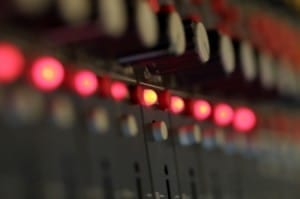Home Recording Academy | How to Use Reverb for Great Mixes
We’ve touched on how reverb can be used to improve vocal tracks before in the Home Recording Academy series, but the effect is one of the most important tools in any studio, be it a professional room or a home recording setup. Therefore we wanted to spend a little more time exploring just exactly what reverb does and how it can help you produce better mixes.

What is Reverb?
The concept of reverb is simple: it creates room. More specifically, it is designed to recreate a natural playing environment, be it a small room or a large recording hall. Since most professional studios are designed to provide little or no audio reflections (sound waves bouncing off walls and ceilings that sustain a sound), instruments and vocal can sound unnatural and dry. Adding reverb adds the space that helps provide a natural sound. This space can also improve the balance of your mixes.
Reverb as an Effect vs. Reverb as a Mixing Tool
Sometimes reverb is used more as an effect than a tool to make tracks sound more natural. For example, there is a trend in certain corners of indie rock that features a “washed out” sound where entire tracks seemed to be swimming in reverb. Recently, this includes bands like Girls, Surfer Blood and many others, though the trend goes much further back.
Additionally, even natural reverb can sound unnatural. It is reported that Jim James would record vocals in abandoned silos to create huge vocal reverbs for early My Morning Jacket records. Though the reverb is not studio created, most singers don’t naturally find themselves in a silo.
But typically you barely notice reverb on a song until you really listen for it. Though the heading of this section may be a little misleading as ‘verb is always an effect, it can also help your sounds in other ways.
Reverb in the Mix
Remember that space that ‘verb creates for vocals and instruments and makes them sound more natural? It does the same for those instruments in your mix.
There are times when simply changing the volume of a track just won’t give you the desired sound of you mix. Even after adjusting the EQ and compression settings, the track just doesn’t “sit” well in the mix. This is where reverb can often help.
That space it adds can make tracks seem further from the listener. Therefore, you can make a track less prominent in a mix without actually turning the volume down. It’s hard to explain the possibilities this opens up for you in an article, but as soon as you begin playing with this in your mixes, you’ll see the power reverb holds in your mix.
Don’t be afraid to experiment. Sometimes you do want to “wash out” a track with a ton of reverb, and it will be exactly what your mix needs. Just like any recording tip, it’s all about the sound you want, and working with all the tools available until you achieve that sound.




